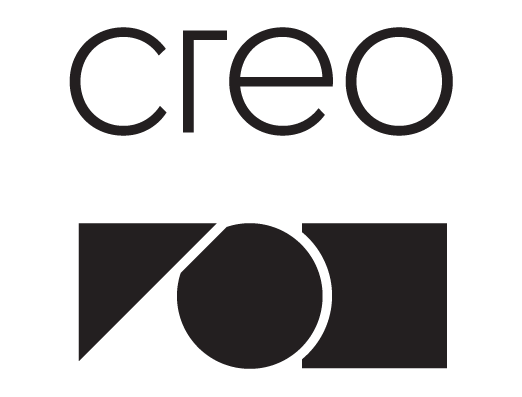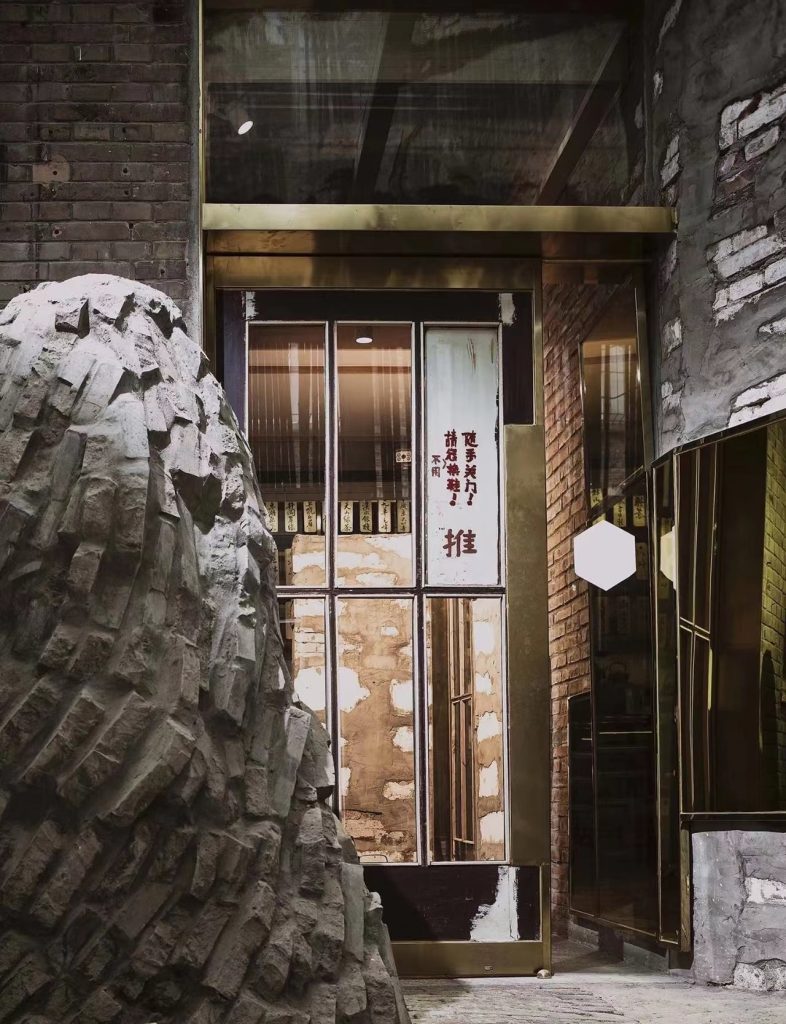
PHOTOFAIRS Shanghai is delighted to bring you a conversation with collector Ouyang Kunlun. Our team met Ouyang at his tea house, which he designed and established a few years ago with some of his friends from the art community and is located in Beijing’s 798 Art Zone. More than just a space for tea, it also serves as a venue for exhibitions and social gatherings. Within these walls, the designer’s artistic touch becomes evident, intricately blending into the industrial remnants and brick-and-tile aesthetics. Ingenious creativity lies behind every object, subtly pervasive yet nearly imperceptible, mirroring Ouyang Kunlun’s nuanced approach to art and collecting.
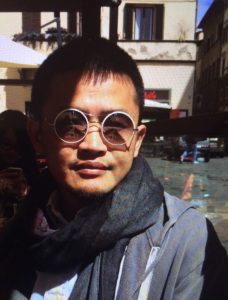
Ouyang Kunlun
Back in 2016, Ouyang Kunlun was a guest speaker at the 3rd PHOTOFAIRS Shanghai, as part of the Conversations program, sharing his journey from art enthusiast to devoted art collector. Later in 2020, Ouyang, as a collector and a council member of M WOODS, played a pivotal role in curating Collective Care: A House with Many Guests at M WOODS 798. In this exhibition, he tailored a display space to showcase a special five-panel video work by the experimental video artist Li Ming. As a spatial designer and an unwavering admirer of Li Ming’s work, Ouyang has a keen understanding of the structure/mechanism embedded in the artist’s creations.
The structure and mechanism employed by artists can be seen as a tangible means to utilize their body or behavior to reenact the spontaneity and playfulness found in everyday life. And, when viewed on a more poetic and universal scale, it can be portrayed as the artist’s exploration of the clandestine core within their creative process. This enigmatic essence stands as precisely one of Ouyang Kunlun’s stringent criteria when determining whether to add an art piece to his collection.
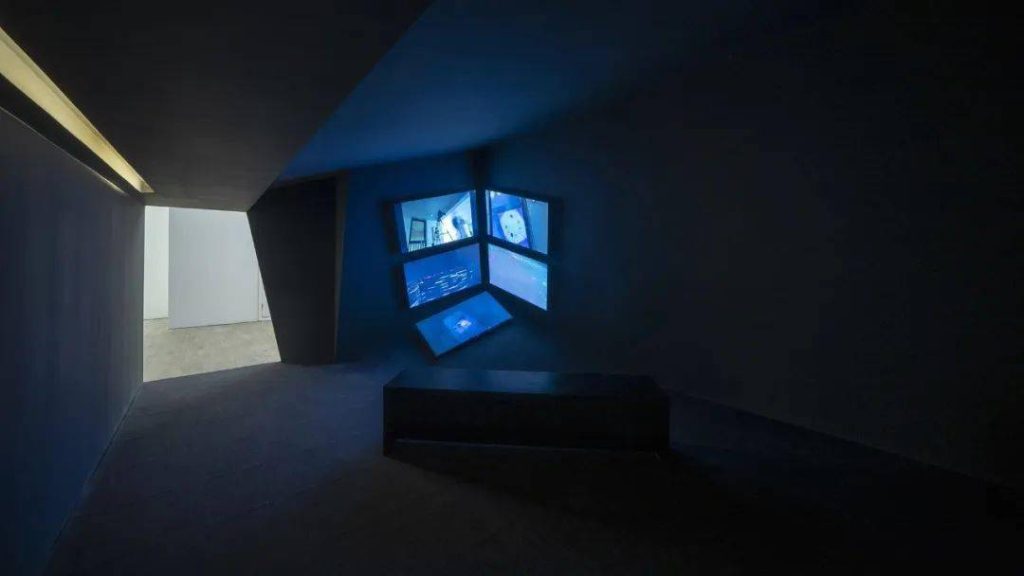
© Exhibition View of Collective Care: A House with Many Guests, 2020.
In fact, before diving into contemporary art collecting, Ouyang had a fascination for antiques and traditional artifacts. However, he later shifted his focus from ancient art, a world with a relatively unified sense of aesthetic and cultural logic, towards contemporary art. He explained that, “the contemporary world challenges the notion of holism. Here, universal meanings and absolute centers fade away. Artists concentrate on individualism. It’s as if they are sculpting fragments into the universe.”
He believes that good artists can consistently navigate the optimal balance between the individual and the wider universe. They must employ their creativity to bridge the gap between the two, particularly when personal subjectivity clashes with the social environment. Therefore, collecting an art piece gives the collector another perspective on both the individual and the universe. As a result, seasoned collectors develop a clearer understanding of their own subjectivity and its limitations.
In our conversation, he specifically pointed out that art collecting should remain as open and dynamic as art creation. “For the last three years, amidst the pandemic, my primary focus has been on artists born in the 1990s”, he remarked. “I want to see how they think and express themselves, aiming to fill the gaps in my understanding of the world.“
For Ouyang, the true joy of collecting goes beyond the thrill of consumption or the satisfaction of wealth appreciation. It involves stimulating profound contemplation, fostering a broader understanding, and ultimately empowering individuals towards greater self-sufficiency.
PF: You once acquired an artwork simply because you didn’t understand it. What is your thought process behind this kind of decision?
Ouyang: I bought it as a way to challenge myself, a modest attempt to understand the artist’s creative intent.
Even today, I am open to collecting artwork that I don’t fully understand. However, I only do so when I have a holistic understanding of the artist and a genuine appreciation of his/her creative process.
PF: So, from a collector’s perspective, do you encourage emerging collectors to acquire works they like and understand?
Ouyang: Collectors embrace art in diverse ways. It’s crucial for me to connect with the artists and resonate with their creations on a personal level.
PF: When did you start collecting works by Li Ming? What draws you to his work?
Ouyang: In 2014, Li Ming presented his first solo exhibition, Mediation, at Antenna Space (Shanghai). Since then, I have consistently added his work to my collection.
Li Ming employs contemporary language to construct his own universe. In his creations, contradictions are palpable. He strives to convey a wealth of meanings with minimal language. So his works possess a smooth yet raw quality. While presenting viewers with a clear direction, they also offer playful detours, resembling an open gaming mechanism.
For his video project, Li Ming-HaHaHa, we incorporated the gaming mechanism into the exhibition booth design. Strategically, we divided the booth into three halls—front, middle, and back—and arranged five of his works in a sequence: the front hall introduces entry-level pieces, Swordsman-HaHaHaHaHa and Comb; the middle hall unveils more sophisticated pieces, Zoom and One Day. Finally, the back hall stages the ultimate challenge, Fèng.
Audiences can switch rooms while viewing the video works, just like in a game—battling foes, leveling up, and conquering challenges. If they find the artwork too challenging, there’s always a way out, which is equivalent to “game over” in video games.
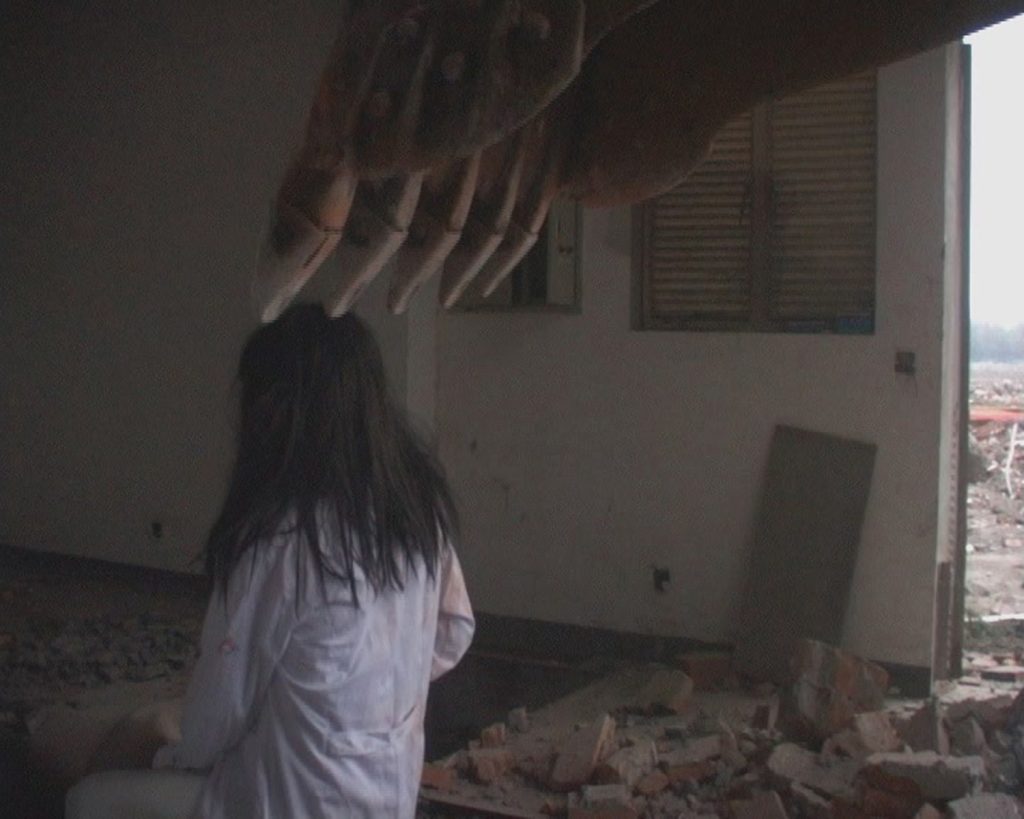
© Li Ming, Comb, 2008. Courtesy of Ouyang Kunlun
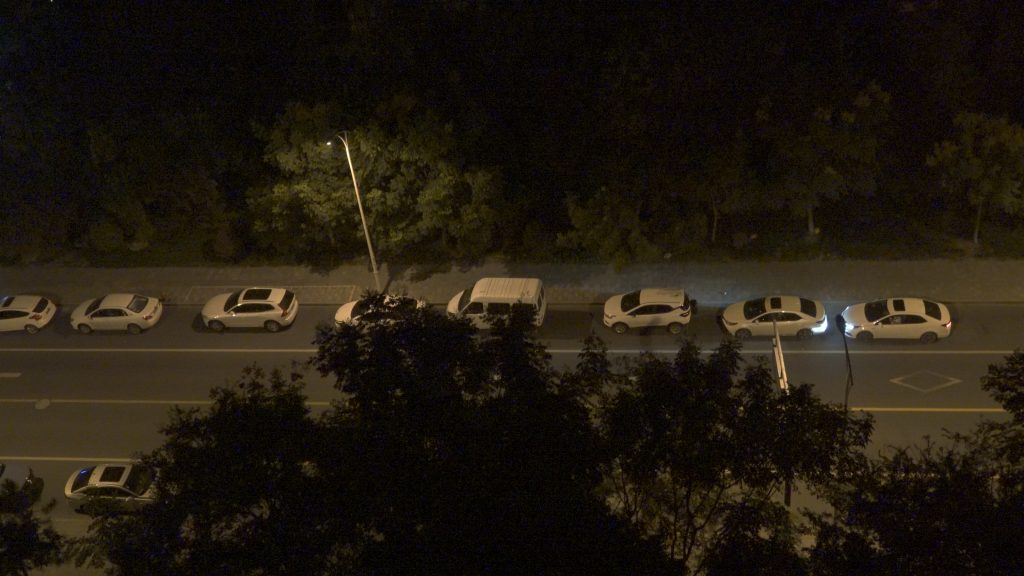
© Li Ming, One Day, 2021. Courtesy of Ouyang Kunlun
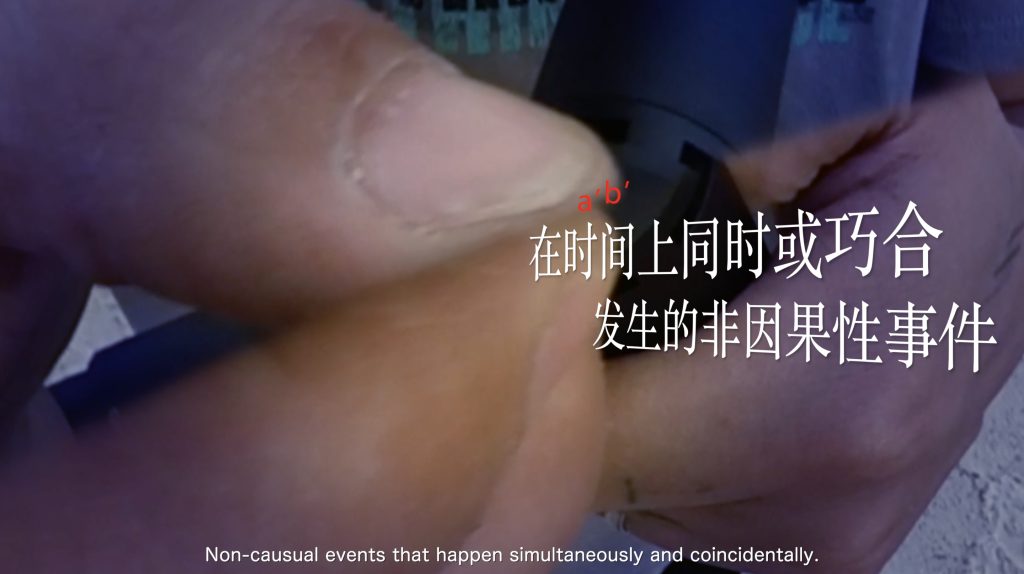
© Li Ming, Fèng, 2020. Courtesy of Ouyang Kunlun
PF: Besides Li Ming, are there any other contemporary video artists who have caught your attention recently?
Ouyang: I’ve been following artists like Li Liao, Liu Chengrui, Li Binyuan, Yu Guo, and others. And I’m also keeping an eye on younger talents, like Li Weiyi.
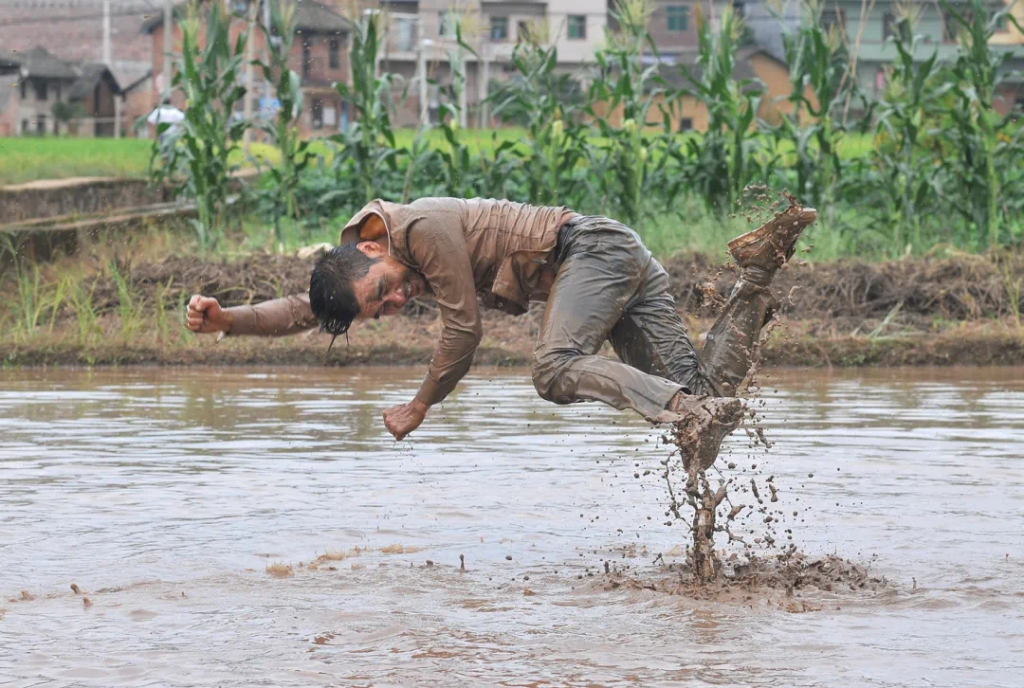
© Li Binyuan, Freedom Farming, 2014. Courtesy of Ouyang Kunlun

© Yu Guo, The Mountains, 2023. Courtesy of Ouyang Kunlun
PF: From a collector’s perspective, what are the unique aspects of video art?
Ouyang: Video art differs from painting and photography; it lacks decisive instants and isn’t as direct. It comprises streams of images, information and time. Therefore, watching video art requires immersing oneself in that time period. So viewers need to be mentally and physically prepared.
PF: How do you perceive the role of exhibition spaces when showcasing video art? What is your perspective on the growing trend of creating immersive environments for video art?
Ouyang: The exhibition space definitely plays a significant role. But I do have some doubts. Exhibition curation often comes with preconceived notions, aiming to engage with viewers and achieve specific objectives, such as education and sales. Yet, I also hope art can return to more everyday contexts, much like the ambiance I aimed to create when designing the tea house.
Certainly, on ceremonial occasions, like attending a film premiere, it’s delightful to enjoy an artwork with friends who share similar interests.
PF: What research do you generally do before acquiring art pieces?
Ouyang: To be honest, I don’t do much research. For me, it’s more about leveraging art to see the limitations of reality and building a parallel world alongside it through collecting.
While collecting often involves a financial transaction and value exchange, acquiring a new artwork feels more like initiating a new relationship in my life. This relationship requires a constant commitment for it to flourish. Ultimately, the true joy of collecting resides in cognition, and in the process of getting to learn new things. It is for everyone and has nothing to do with money, power or rules.
PF: What factors will influence your decision to acquire – or not – an artwork? What specific themes of video art are you generally interested in?
Ouyang: It usually revolves around the artist’s creative journey and the unique attributes of the artwork. Drawing from more than a decade of art collecting experience and exchanges with artists, I have gradually summarized my own “Socratic method” on how to understand an artwork.
First, the artist needs to engage in a process of introspection, asking themselves questions like: Who am I? Where do I come from? Where am I going? They establish their subjectivity through this questioning process, such as political, environmental, collective, temporal and spatial awareness, survival instincts, identity and individual consciousness. And this establishment is grounded in the nuances of everyday life, and is shaped by the artist’s experiences. So that means the artist must develop a fundamental and comprehensive understanding of themselves and their circumstances. And they must perceive the tangible gap between individual reality and idealism. Therefore, their creations can serve as an act of reconciling, reinforcing, or alienating the gap.
Second, I’ll pose a few hypotheses: has the artist successfully navigated the relationship between the self, the world, and the act of creating? Do they demonstrate the ability to identify problems? Can they construct a framework for the problem related to the self, societal order, institutional dynamics, or the irreconcilability of the symbol system? Moreover, can they artistically respond to these irreconcilable facets in an abstract and independent manner? At this point, their creations are working towards reconciling, reinforcing, or alienating the gap between the self and society, or even the self and the overarching societal backdrop.
Third, I’ll examine: can the artist return to themselves? Can they leverage the gap they identified as a foundation to build their own universe? In the contemporary art world, an artist needs to return to their own essence, work on these unique and specific fragments, and then craft them into a novel universe. While the world might have limitations, it has evolved with new symbolic and operational mechanisms. More importantly, the work cannot just be about concepts or thoughts. The artist must actively intervene in this world, to push the evolution and operate the world. Artists now shoulder more expansive social responsibility. They need to actively promote and disseminate their work, making their creation of a parallel universe to intervene with reality, and potentially reshape the existing symbol system.
This is currently my personal method. I also pay attention to artists and/or artworks that resonate deeply with me. This resonance revolves around space, time, experience, and memory.
PF: Over the years, how has your art collection evolved?
Ouyang: In the initial years, my eyes and ears made the call. Now, it depends on how I resonate with the artwork. I’ll also use my “Socratic method”, fine-tuning it through validation.
From various perspectives, there is an apparent trend towards heightened efficiency, homogeneity, and egalitarianism. Art institutions, exhibitions, and emerging artists, along with the resurgence of established ones, bombard us with information. Beyond the value of the work, what is the other collective focus on the essence of art? Each participant brings his/her unique motivations and preferences to the table, investing in alignment with his/her personal tastes. I believe that art constitutes the liberating and renewing force, and must persistently chart its course forward.
